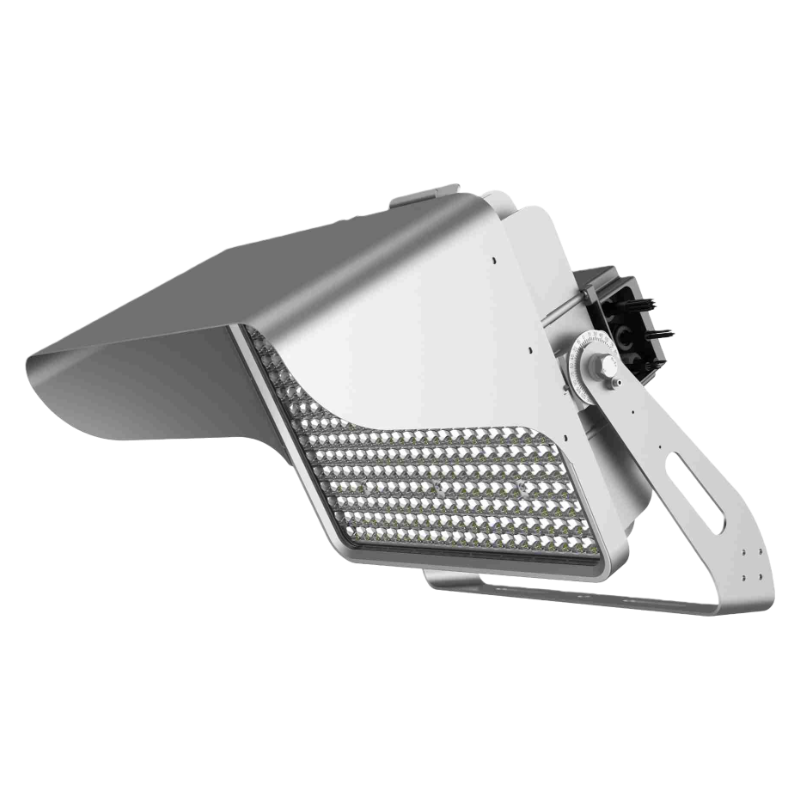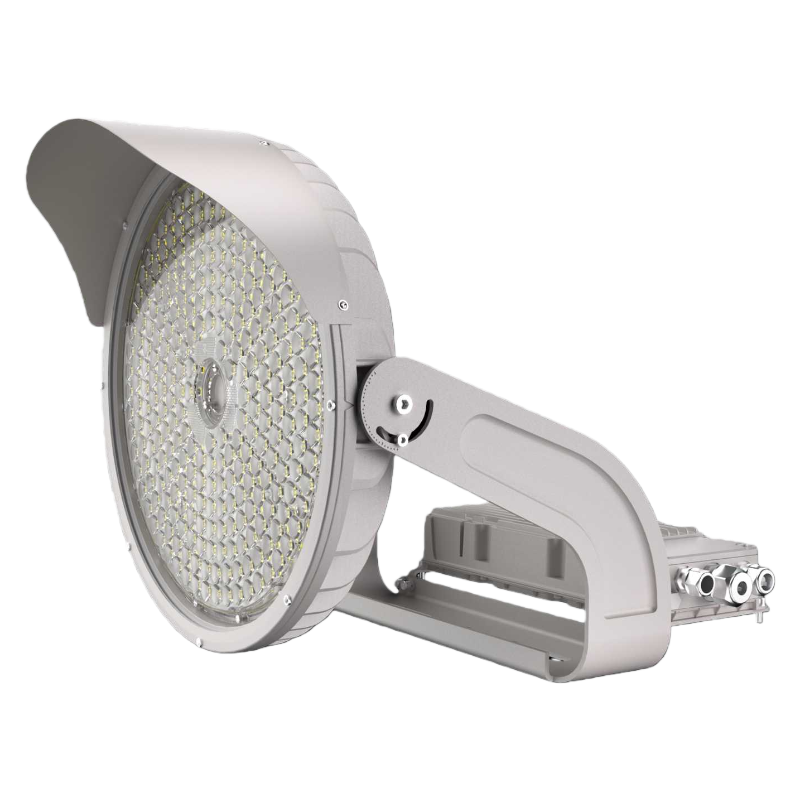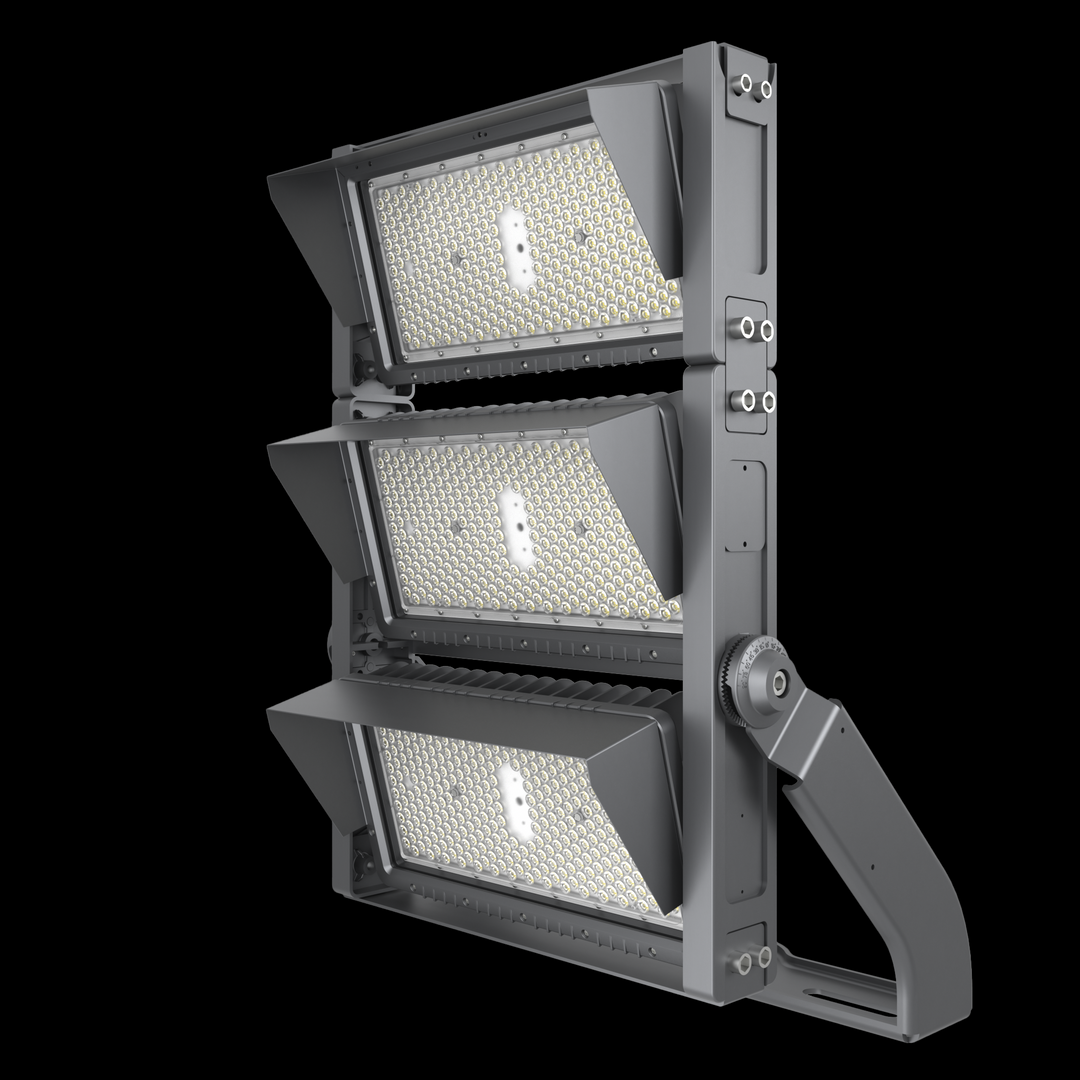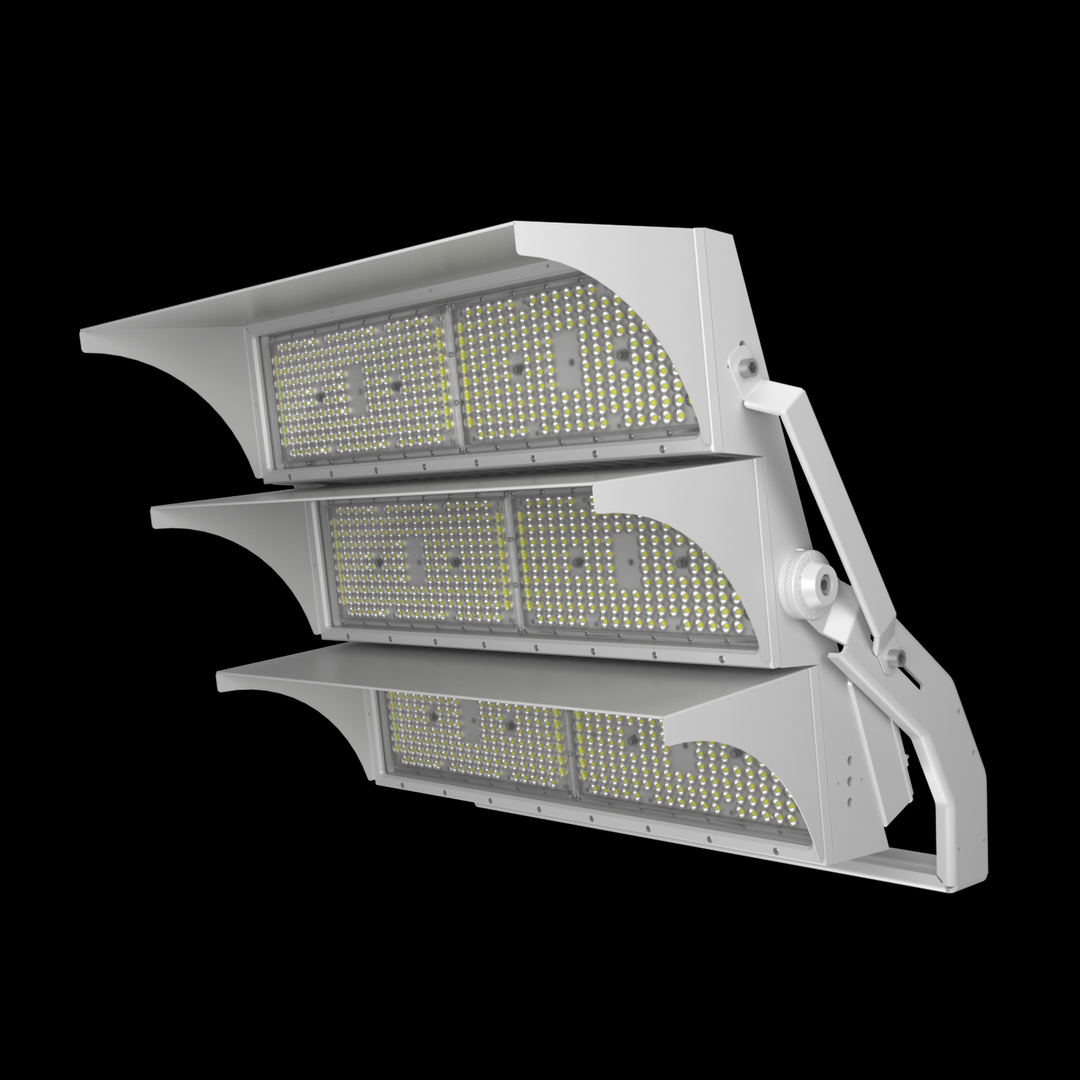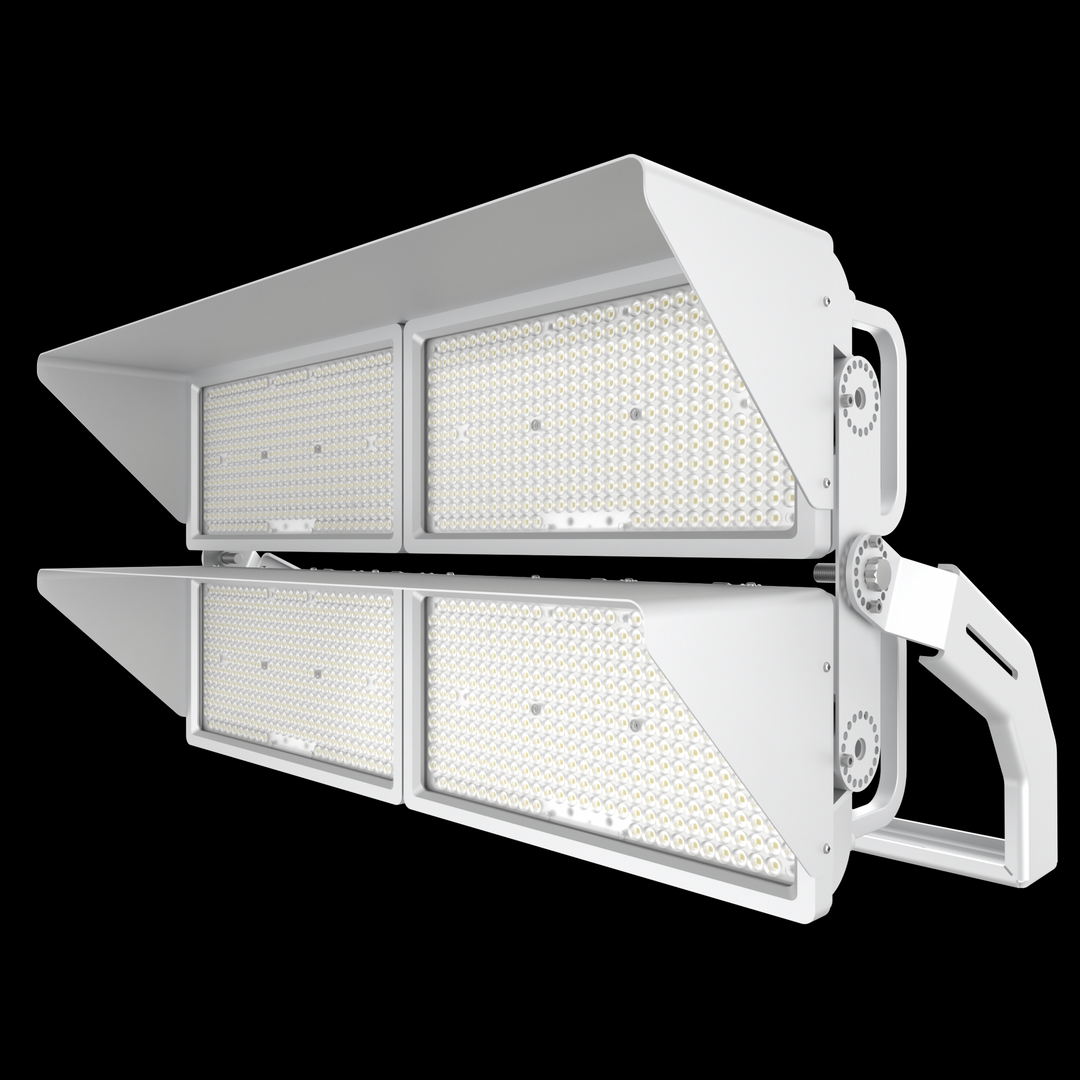What is CRI? The Ultimate Guide to the Color Rendering Index
Luminous efficiency refers to the ratio of the luminous flux emitted by a light source to the power consumed, and the unit is lumen/watt. Luminous efficiency is an indicator of the ability of lighting equipment to convert electrical energy into light energy. The higher the luminous efficiency value, the more energy-saving the lighting equipment is while providing the same brightness; at the same power, the stronger the lighting performance of the lighting equipment, that is, the greater the brightness. The level of luminous efficiency is directly related to the energy efficiency and energy-saving performance of lighting equipment.
Regarding the concept of color rendering, color rendering refers to the ability of a light source to present the color of an object, that is, the true degree of the color of an object under the light source. A light source with high color rendering can better restore the natural color of an object, while a light source with low color rendering may cause distortion of the color of the object. Color rendering is usually measured by the color rendering index (CRI). The higher the CRI, the better the color rendering of the light source.
Color Rendering Index plays a crucial part in the lighting world. This key metric tells you how light reflects the real color of an object that is similar to what a human eye can see. Well, if you are designing an office, home, art gallery, or photo studio, it is important that you must know about the CRI.
The knowledge of CRI helps you make the right lighting choices in your settings. This blog explains all the little details you need to know about CRI, like what CRI is, how it works, and how and where you can use it.
What is CRI?
CRI, or Color Rendering Index, measures the ability of a lighting device to reproduce the real color of an object compared to natural sunlight. The measuring scale of CRI has units between 0-100. If this scale shows a value of 100, it means the light has perfect rendering colors, the same as natural light. The higher the CRI value, the more accurate the color render will be.
The Science Behind CRI
CIE first introduced the idea of CRI to the world in 1965. In the start, the concept revolves around comparing the results of color rendering of one test light device with one reference light device. Both light sources have a similar color temperature. Most of the time, manufacturers use incandescent light bulbs as a reference light source.
Developers use test light and reference light to illuminate the eight samples of standard colors to measure CRI. Then, they calculate the difference between the color appearance and give them the CRI score accordingly. Lesser differences mean higher CRI.
How CRI is Measured?
CRI is basically calculated using the CIE-1974 Test Color Analysis. It comprises 14 samples of colors. The first 8 color samples are called TCS. TCS is used to measure the basic CRI. It contains samples of pastel colors, such as moderate blue, yellowish green, grayish yellow, and light red with a grayish touch. The remaining 6 color samples out of 14 are used to measure specific color analysis.
However, you can follow these simple steps to measure the Color Rendering Index:
- Select the Reference Light Source: Make sure that both the test light and reference light have the same color temperature.
- Illuminate the Color Samples: Check the TCS illumination of both the test light and reference light.
- Compare Color Rendering: Calculate the color difference by matching the samples of both reference and test light.
- Calculate CRI: Measure the difference and give the value of the CRI score from 0-100 to the test light.
Importance of CRI
CRI plays a vital role in how you perceive things under lights. Lights that have high CRI ensure you see the true colors of the object. The following are reasons that speak of the importance of CRI:
- Accurate Color Perception: Places like medical facilities, art spaces, photo studios, and retail stores need high CRI lights. This helps them to see the objects in their true color appearance.
- Enhanced Visual Comfort: High CRI lights give a natural lighting experience, which reduces eye fatigue.
- Improved Aesthetics: Places that have nice architectural designs require high CRI lights to enhance the overall aesthetic of these places.
CRI in Different Applications
The required CRI rating varies from application to application. This means that different places need a certain range of CRI to improve their illumination.
- Residential Lighting: Lighting devices used in residential areas must have 80 or above CRI. This rating ensures that you see decor, furniture, and settings in their real tones.
- Retail Lighting: Retail stores must use lights that have 90 or above CRI. The true appearance and vibrant colors of the products attract more customers and increase your sales.
- Art Galleries and Museums: Such places require high CRI lights with a 95 or above rating to show the exact color and appearance of the artwork.
- Photography and Videography: In photo studios, lights should be of high CRI to capture the accurate color of the objects and person.
- Medical and Dental Facilities: Doctors need bright light with high CRI so that they can diagnose the underlying cause of the patient and treat them efficiently.
- Industrial and Manufacturing: These places also require high CRI lights to identify errors and defects in the products early.
Comparing CRI with Other Metrics
CRI is not the only metric that measures the color quality of the objects. Instead, there are various other metrics that help calculate CR.
- TM-30: It is developed by IES. TM-30 gives a detailed and accurate analysis of color rendering. It measures the Gamut Index and Fidelity Index to measure CR.
- CQS: NIST developed CQS as an updated version of CRI by adding a wide number of color samples to match the human eye.
- GAI: This measures the gamut of the light to get the ratio of vividness and color saturation.
Limitations of CRI
CRI is considered a useful measuring tool, but it also has some limitations.
- Limited Sample Colors: The result of CRI basically depends on only 8 color samples. This does not represent the wide range of colors of the real world.
- Equal Weighting: All of the 8 color samples of CRI have the same weight. This means it cannot represent the significance of some colors in certain applications.
- Color Temperature Dependency: The result of CRI may vary as the color temperature changes. This indicates that an application that has a distinct color temperature cannot show an accurate CRI.
- Lack Of Saturation Information: Some applications require saturation, and CRI does not have the ability to measure color saturation.
How to Choose Lighting Based on CRI?
In order to choose the right light, you need to follow some factors to get better color rendering:
- Application Requirements: First, you need to identify the place where you need to put lights. If it is an art or photo studio, you need high CRI lights, while for residential areas, low CRI lights.
- Color Temperature: Make sure that the light source you choose has an appropriate color temperature for your setting. For instance, go for warm lights for homes and bright white lights for commercial areas.
- Lighting Technology: Choose the right appropriately because each light device comes with a different CRI level.
- Manufacturer Specifications: It is important to always check whether the light you choose is verified and tested for CRI accuracy.
Future Trends in Color Rendering
The color rendering industry keeps evolving with time. The continuous research aims to improve their measuring system.
- Advanced Metrics: Units like CQS and TM-30 provide more detailed and accurate color rendering results. Therefore, they are becoming more famous than CRI.
- Human-Centric Lighting: Developers are focusing on creating human-centric lights. They have better color rendering ability and are safe for human health.
- Smart Lighting Solutions: Smart lights allow users to have full control over their CRI and color temperature. This enables them to customize their lights as per their needs.
- Sustainable Lighting: The focus of today’s generation is more on using sustainable devices. The new eco-friendly lights provide better color rendering.
Conclusion
People need to understand CRI first to make the right light choices. Whether you are considering building a new home or setting up your own working space, it is crucial for you to learn about CRI. CRI serves as a useful measuring metric in the lighting world. It measures the ability of the light to reflect the color of an object as it does in real light.
This simply means the way you see objects in real light; these lights will show you the same appearance of the object in their lighting. Some settings need high CRI lights, while others need low ones. Therefore, you must know where and why you are placing light. This way, you can make the right decision when selecting the appropriate CRI.
At ZC Lighting, we provide high-quality CRI-tested lights. For more information, visit our website or contact us via email.
In summary, light efficiency and color rendering are two important indicators for measuring the performance of lighting equipment. Light efficiency focuses on energy efficiency and lighting intensity, while color rendering focuses on the ability of light to restore the color of objects.


